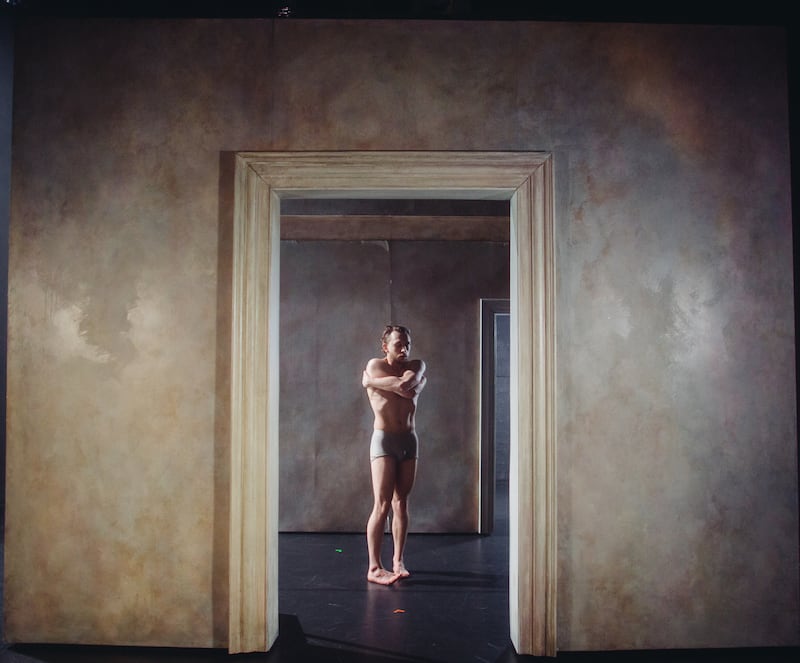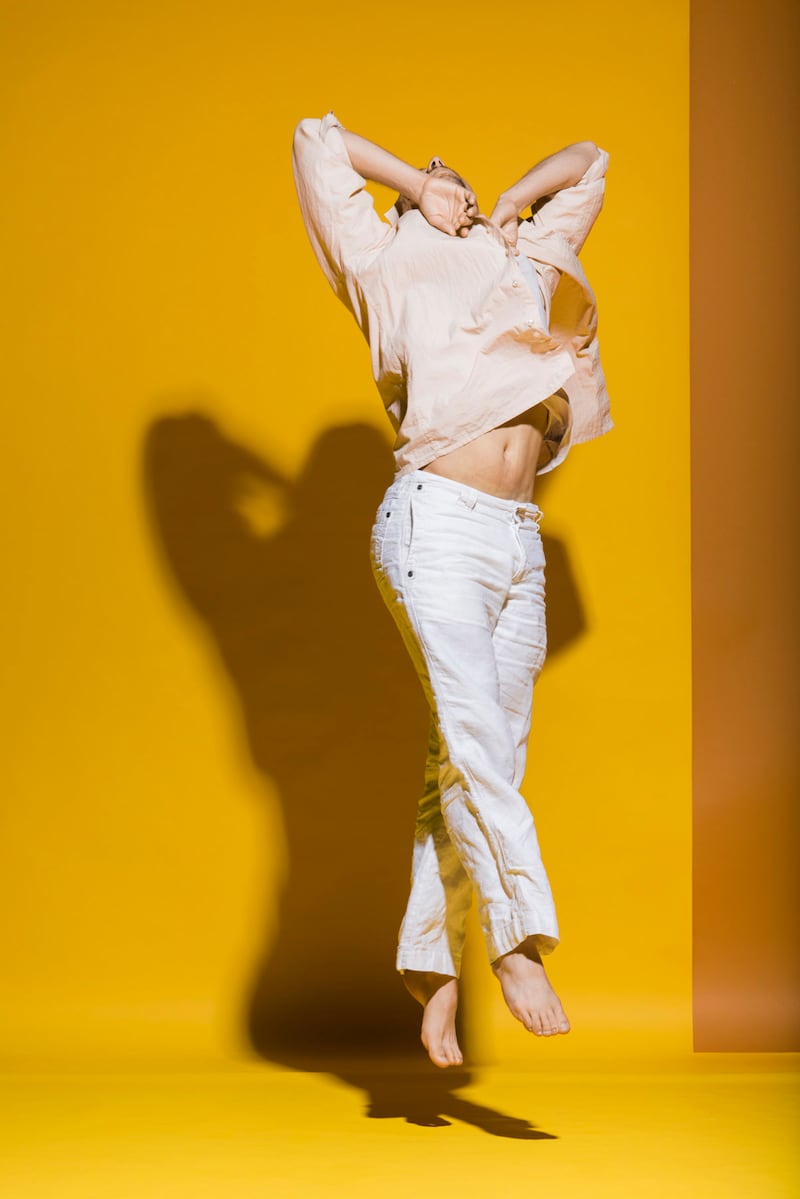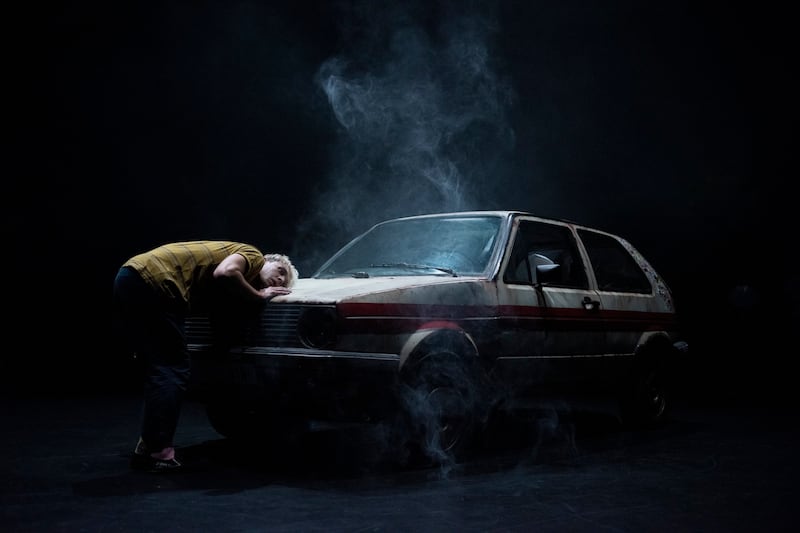Thankfully, Kévin Coquelard can squeeze in a Zoom call. Sitting in his parents’ house in Burgundy, he has just got back from Australia, where he danced Emma Martin’s solo Birdboy. The following day he’s going to Sweden to dance in Oona Doherty’s Navy Blue and then to Belfast to work on Gutter, a new solo by the choreographer Eileen McClory.
“I did some laundry as soon as I arrived yesterday, and had a chat with Eileen earlier today about Gutter,” he says. “I was also trying to do my taxes. So, yeah, it’s a day off, but it’s not really a day off.”
Project-hopping is common enough for freelance dancers, but Coquelard is probably unique in the range of work in which he has appeared. If you’ve seen any of the most important Irish dance works created during the past 10 years, the chances are he was dancing in them. As well as Martin and Doherty, it’s a repertoire that includes choreographers and companies such as John Scott, Liz Roche, Junk Ensemble, Philip Connaughton and Maria Nilsson Waller.

Coquelard’s upcoming solo Gutter was commissioned by Belfast International Arts Festival, and the concept couldn’t be more timely: an exploration of false news, social-media algorithms and the general diminution of facts and tangible realities.
READ MORE
“Eileen came to me with this idea of a project where one person is in control of everything. We wanted to create a character hosting a show, and so we looked at a lot of American TV shows, like Fox News and Jimmy Kimmell.” In this character, called, simply, the Host, Coquelard embodies the worst traits of egotistical narcissism. “Gutter is about power, control and manipulation. It asks questions like, ‘Who’s controlling who? Who’s manipulating who?’ In the performance I’m manipulating the audience, but I’m also being manipulated.”
You go from project to project and then it is never revived. Two months’ work and then it’s over
The performance skills he will display in Gutter are far from those he gained during his formal dance training in France. As a teenager, he was introduced to modern jazz-dance classes, and when he was 14 he moved to the Paris Conservatoire to study contemporary dance. There, he became immersed in solid 20th-century repertoire such as the works of Merce Cunningham and Pina Bausch. When John Scott created a piece with third-year students, Coquelard discovered a new freedom.
“I loved the madness,” he says. “In the conservatoire, you could feel restricted. John showed how it was possible to do anything on stage. He allowed a complete freedom of moving and experimenting. You could just throw yourself on the floor and scream.”
Scott recalls how Coquelard stood out as a performer. “The rehearsal process involved some crazy improvisations, and the standard of all the students was amazing,” he says. “But somehow Kévin stood out, because he was technically outstanding but also very human and witty and very present. He sometimes looked like a young child, and other times seemed like an old soul. Later that year, Kévin and another dancer came to take workshops with me at Dance Ireland, and then he asked me to create his graduation solo for his final year at the conservatoire.”
That work, The Big Message, became part of the repertoire of Scott’s Irish Modern Dance Theatre, and Coquelard subsequently went on the perform for the company, embracing all of the physical challenges that came his way.
“I remember dancing in Hyperactive,” he says, referring to Scott’s 2013 dance. “I think the show was maybe 45 minutes long. Halfway through, I didn’t know how I was going to do the rest of it. I was pushing the limits of the tiredness, which creates this feeling like you’re not yourself. You go further.”
Working with Scott also exposed him to dancing with different bodies. “Sometimes we are working with people that are not doing dance as a profession or are purely amateur. And when I say amateur I’m not saying that in a bad way. It’s great to see another way to move, because we have to somehow find unity in the group. So when you’re suddenly moving with someone that is dancing in a more pedestrian way, it’s up to us trained dancers to break the habits and ways we are thinking and moving.”
Coquelard began dancing with the Liz Roche Company in 2015, and has featured in almost every one of her works since. Roche acknowledges the role he played in her journey as a choreographer. “He just gets under the skin of an idea and then commits his whole being to that moment,” she says. “Somehow, his body finds a way to make the most difficult choreographic tasks work, and not only work but sing through his dancing.”

Scott similarly notes Coquelard’s ability to physically express a choreographer’s ideas. “When Kevin and I started to work together, he embodied something from inside my own head that I didn’t need to articulate.”
Switching between choreographers has never been difficult for Coquelard, in spite of different styles and artistic processes. “None of the choreographers that I worked for had the same approach,” he says. “John is really interested in performers. Liz is really interested in the movement itself. Whereas Emma [Martin] is interested in atmosphere and what the whole experience makes the audience feel.”
I’m really bad at administration, which I discovered is vital if you want to make your own work
What is difficult, according to Coquelard, is the way funding structures in Ireland are skewed towards the constant creation of new work rather than the revisiting of old repertoire. “You go from project to project, and then it is never revived. Two months’ work and then it’s over,” he says.
Emma Martin’s Birdboy and Oona Doherty’s Navy Blue, which have been successful internationally, have extended their lives through extensive touring, meaning the performers can gain a deeper understanding of the dances. In the case of a new work, such as Gutter, Coquelard will only begin to truly embody his role when the audience is present.
“It’s only when you perform a show that you learn the connection you have with who’s watching. You can never judge that in rehearsals. Suddenly, in the live moment, there are more layers of meaning because the audience is a vital part of the performance.”

He has dabbled in choreography, particularly in collaboration with the Dublin-based Theatre Lovett, dancing and choreographing in The Tin Soldier, which earned him a nomination for best movement at the 2023 Irish Times Irish Theatre Awards. A future collaboration is in the works, but he foresees no full-time move into choreography.
“From talking to Oona [Doherty] and other people, when you start choreographing you might stop dancing,” he says. “And I’m a little bit afraid of that, because I’m still hungry for the stage. Choreography is something that I’d like to really concentrate on, but I don’t know when.”
Gutter is about power, control and manipulation. It asks questions like, ‘Who’s controlling who? Who’s manipulating who?’
There are also the added hidden tasks and pressures to get your own work onstage. “It’s not easy. I’m really bad at administration, which I discovered is vital if you want to make your own work,” Coquelard says. “That’s why it’s good to have a project like Birdboy or Gutter that I’m involved in creatively but without having to take care of the big picture.”
It doesn’t mean that he can avoid unpaid behind-the-scenes tasks: dancers spend many hours organising work before setting foot in the dance studio.
“I don’t think that people who are not in the industry really fully understand. We are our own agents, so we have to deal with a lot of issues like negotiating with companies about contracts. We have to do a lot of work just so we can work. And we are never paid for that time.”
This was just one of the reasons that prompted Coquelard to move back to France. “Life in Ireland is really expensive. Rent is so expensive. I found myself trapped into having to work more and more just to get by. And dance is a physical activity and incredibly demanding.” Irish audiences will still see him dance despite his move to France. “All of my connections with work are in Ireland, because that’s really where I started. My heart is still somehow there.”
Gutter is at the Mac, as part of Belfast International Arts Festival, on Saturday, October 28th, and Sunday, October 29th


















